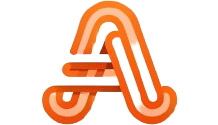Understanding the Female Anatomy of Cows
The female anatomy of a cow is a complex and fascinating subject. Just like humans, cows have reproductive systems that play a vital role in their ability to reproduce and sustain populations. By delving into the intricacies of cow anatomy, we can gain a deeper understanding of these creatures and their reproductive capabilities. In this article, we will explore the female anatomy of cows in detail, shedding light on the various structures and functions that are essential for their reproductive success.
1. Reproductive Organs
The reproductive organs of female cows are designed to facilitate the process of reproduction. The main reproductive organs in cows include the ovaries, oviducts, uterus, cervix, and vagina. These organs work together to ensure the successful development and birth of calves.
-
Ovaries: The ovaries are responsible for producing eggs (ova) and hormones such as estrogen and progesterone. Cows typically have two ovaries, one on each side of the body.
-
Oviducts: The oviducts are tubes that connect the ovaries to the uterus. They capture the eggs released from the ovaries and transport them to the uterus for fertilization.
-
Uterus: The uterus is where the fertilized egg implants and develops into a fetus. The uterus is essential for nourishing and protecting the growing calf during pregnancy.
-
Cervix: The cervix is a muscular structure that separates the uterus from the vagina. It helps seal the uterus during pregnancy to prevent infections.
-
Vagina: The vagina is the passageway through which the male sperm enters the female reproductive tract during mating. It also serves as the birth canal during calving.
2. Estrous Cycle
Cows, like many mammals, undergo an estrous cycle, also known as the heat cycle. This cycle consists of various stages that are essential for reproductive success.
-
Proestrus: This is the first stage of the estrous cycle, characterized by increased estrogen levels and the development of follicles in the ovaries.
-
Estrus: Also known as heat, this is the stage where the cow is fertile and receptive to mating. Signs of estrus include restlessness, mounting other cows, and clear vaginal discharge.
-
Metestrus: After ovulation, the cow enters the metestrus stage, where the corpus luteum forms on the ovary and produces progesterone.
-
Diestrus: The diestrus stage is characterized by the presence of the corpus luteum and high levels of progesterone, preparing the uterus for pregnancy.
3. Artificial Insemination
Artificial insemination (AI) is a common practice in the dairy and beef industry that involves the insemination of cows using frozen semen. AI offers various benefits, such as allowing farmers to select superior genetics, improving breeding efficiency, and reducing the risk of disease transmission.
4. Common Reproductive Issues
Like all animals, cows are susceptible to various reproductive issues that can impact their fertility and overall health.
-
Dystocia: Dystocia refers to difficult or delayed calving, which can be caused by factors such as fetal size, malpresentation, or maternal factors.
-
Retained Placenta: Retained placenta occurs when the cow fails to expel the placental membranes within 12-24 hours post-calving, leading to potential infections.
-
Metritis: Metritis is a common uterine infection that can occur after calving, resulting in symptoms such as fever, foul-smelling vaginal discharge, and reduced milk production.
5. FAQs about Cow Anatomy
1. Do cows have a menstrual cycle like humans?
No, cows have an estrous cycle, which is similar to the menstrual cycle but with some key differences.
2. How many stomachs do cows have?
Cows have four stomachs, known as the rumen, reticulum, omasum, and abomasum.
3. How long is the gestation period for cows?
The gestation period for cows is approximately 285 days, or around 9 months.
4. Are cows monogastric or ruminant animals?
Cows are ruminant animals, meaning they have a complex stomach with four compartments.
5. Can cows have multiple births at once?
Yes, cows can give birth to twins or even triplets in some cases, although it is relatively rare.
By gaining a deeper understanding of the female anatomy of cows, we can appreciate the complexity and beauty of these creatures and the importance of their reproductive systems for sustaining populations. With proper management and care, cows can thrive and contribute to agriculture and food production in significant ways.

